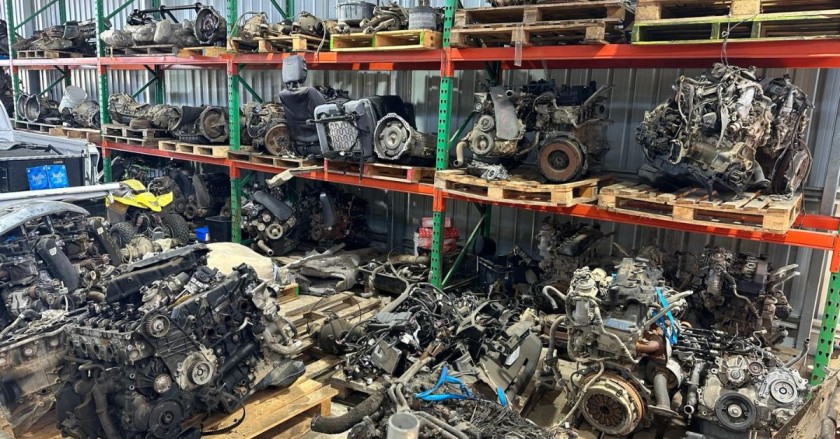In a world grappling with resource depletion and environmental challenges, scrap metal recycling emerges as a beacon of sustainable progress. This practice not only conserves natural resources but also reduces waste, saves energy, and supports a circular economy. As industries and individuals alike seek greener solutions, scrap metal recycling stands out as a vital strategy for a sustainable future.
The Environmental Impact of Scrap Metal Recycling
a. Reducing Landfill Waste
Every year, millions of tons of metal waste—from old cars to discarded appliances—end up in landfills. Scrap metal recycling diverts these materials from waste piles, reducing landfill strain and preventing toxic substances like lead or mercury from leaching into soil and water.
b. Conserving Natural Resources
Mining raw materials like iron, aluminum, and copper is resource-intensive, requiring vast amounts of energy, water, and land. Recycling scrap metal reduces the need for virgin ore extraction, preserving ecosystems and minimising environmental degradation. For instance, recycling aluminum saves up to 95% of the energy needed to produce it from raw bauxite.
c. Lowering Carbon Emissions
The production of metals from recycled materials emits significantly fewer greenhouse gases compared to primary production. For example, recycling steel cuts carbon emissions by up to 60%. As global efforts to combat climate change intensify, scrap metal recycling offers a practical way to reduce industrial carbon footprints.
Economic Benefits of Scrap Metal Recycling
a. Job Creation and Economic Growth
The recycling industry generates employment opportunities, from collection and sorting to processing and distribution. According to industry reports, the global metal recycling market is projected to grow steadily, creating jobs and fostering economic resilience in communities worldwide.
b. Cost Savings for Industries
Using recycled metals is often cheaper than extracting and processing raw materials. Manufacturers can lower production costs, which can translate to more affordable products for consumers. Additionally, businesses that recycle scrap metal can generate revenue by selling it to recycling facilities.
c. Supporting a Circular Economy
Scrap metal recycling is a cornerstone of the circular economy, where materials are reused and repurposed rather than discarded. This model reduces waste, promotes resource efficiency, and encourages sustainable production practices, benefiting both businesses and the environment.
Innovations Driving Scrap Metal Recycling
a. Advanced Sorting Technologies
Modern recycling facilities use cutting-edge technologies like magnetic separators, eddy current systems, and AI-powered sorting to efficiently process scrap metal. These advancements improve the quality and quantity of recycled materials, making the process more effective and accessible.
b. Urban Mining
Urban mining—the practice of recovering metals from discarded products like electronics and vehicles—is gaining traction. This approach treats cities as “mines” for valuable materials, reducing reliance on traditional mining and promoting sustainable resource management.
c. Green Manufacturing
Industries are increasingly integrating recycled metals into their supply chains. For example, automakers are using recycled steel and aluminum to produce lighter, more fuel-efficient vehicles, aligning with global sustainability goals.
Challenges and Solutions
a. Public Awareness and Participation
One challenge is the lack of awareness about the importance of scrap metal recycling. Public education campaigns and convenient recycling programs can encourage individuals and businesses to participate actively.
b. Contamination and Quality Control
Contaminated scrap metal can reduce the efficiency of recycling processes. Implementing stricter sorting protocols and educating consumers about proper disposal can improve the quality of recycled materials.
c. Global Collaboration
The scrap metal trade is global, with materials moving across borders. International cooperation and standardised regulations can ensure ethical practices and maximise the benefits of recycling on a global scale.
How Individuals Can Contribute
- Recycle Household Metal: Items like aluminum cans, old appliances, and scrap from home projects can be taken to local recycling centers.
- Support Businesses That Recycle: Choose products from companies that prioritise recycled materials in their manufacturing processes.
- Spread Awareness: Share knowledge about the benefits of scrap metal recycling with friends, family, and communities to foster a culture of sustainability.
Conclusion
Scrap metal recycling is more than just a waste management strategy—it’s a pathway to a sustainable future. By conserving resources, reducing emissions, and driving economic growth, it addresses critical environmental and societal needs. As technology advances and awareness grows, scrap metal recycling will play an increasingly vital role in building a greener, more resilient world. Embracing this practice today ensures a thriving planet for generations to come.



